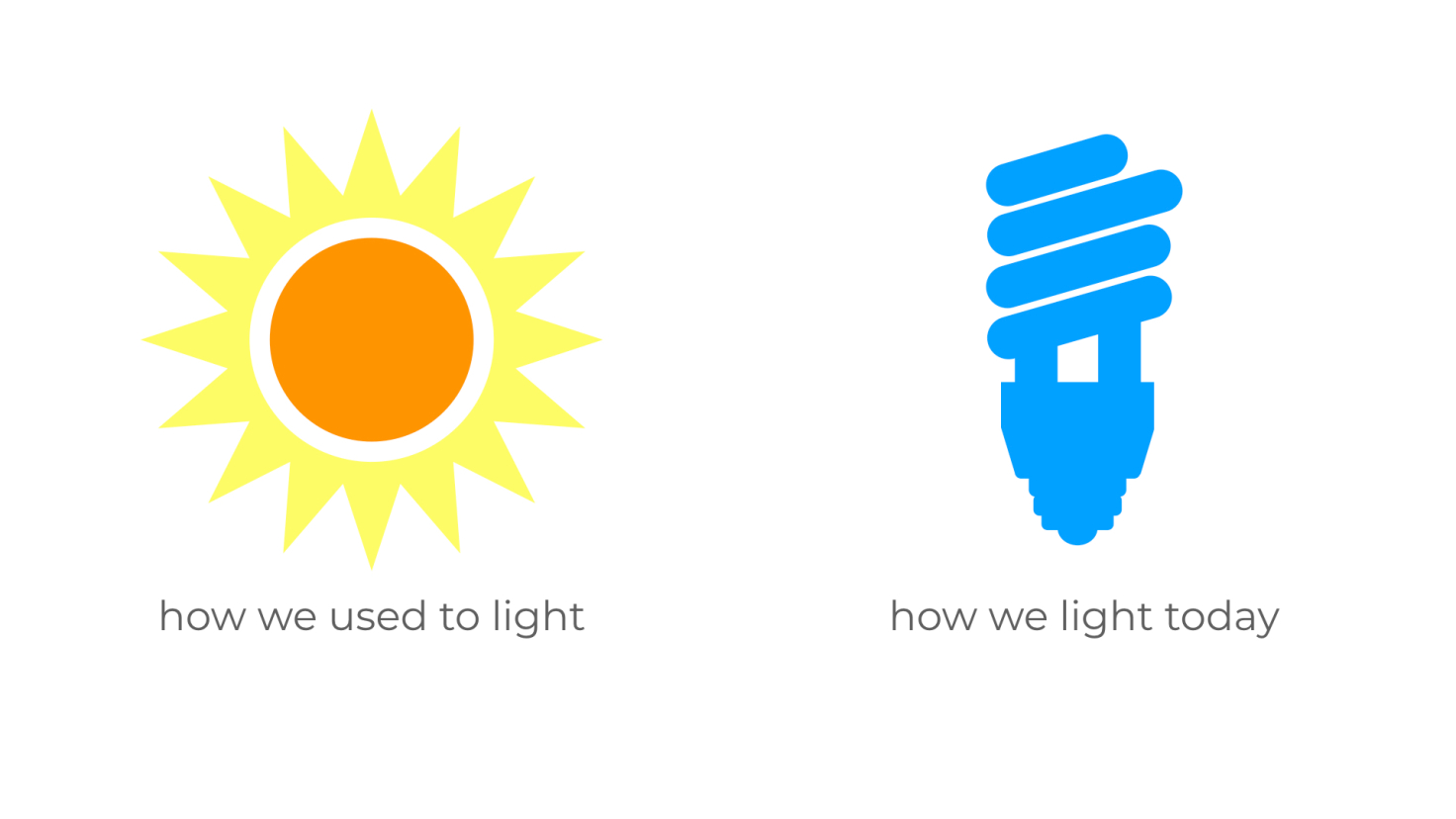I like to believe that I am a forward thinker and not a person who looks behind longingly at The Good Old Days.
Most of the time.
When it comes to architecture, I love where the world is headed. We’re seeing modern homes with large expanses of glass, schools with huge amounts of daylight, factories with skylights and roof monitors, and office buildings with atriums and light wells.
In other words, I am glad that- at least where the sun is concerned- we’re headed backwards. Confused? Let me explain.
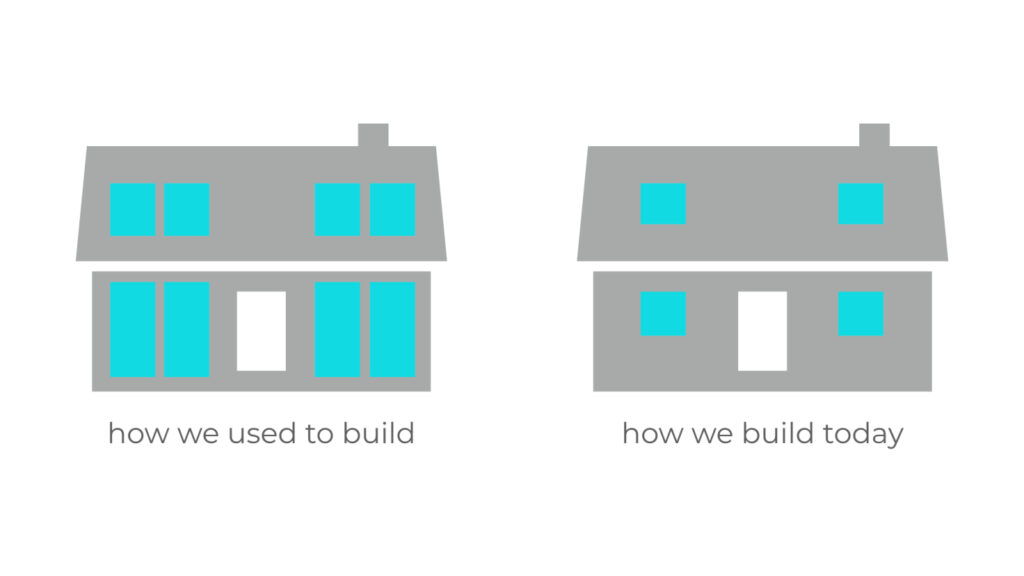
A long time ago, light was either free (from the sun) or expensive. You had to make candles, kill whales, or burn oil. Light was messy and fussy. Since sunlight was free, homes and buildings were designed to admit as much daylight as practical. When glass became affordable during the industrial revolution, windows got bigger. I live in a 1931 home that has a lot of large windows (27, in fact, which I learned before fainting at the cost of replacements or refurbishment). Many days we do not need lights in our rooms, because the builder thoughtfully made holes in the walls for the free stuff. We love it.
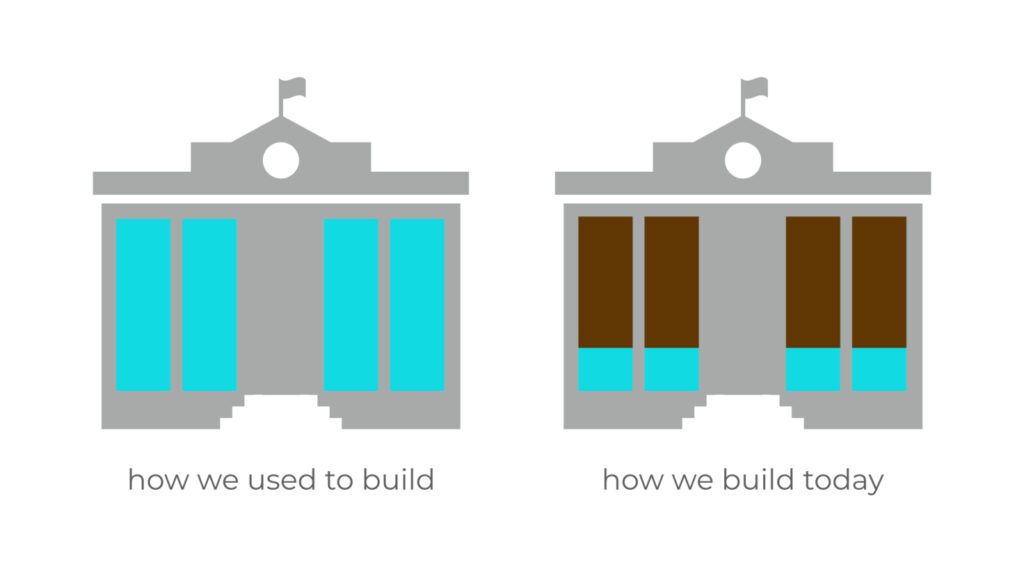
My grade school had big windows, too, but not for me. When energy became a concern in the latter half of the twentieth century, we made every effort to cut down heat loss and heat gain from windows and replaced the missing light with cheap fluorescent bulbs that buzzed overhead.
This was not a win.
In my school, the top 75% was covered with dark brown insulating panels, leaving only small awning openings below. The result was lower energy bills for the school district and light deprivation for the students and teachers. Fortunately, we seemed to have recess twelve times a day and I survived to adulthood.
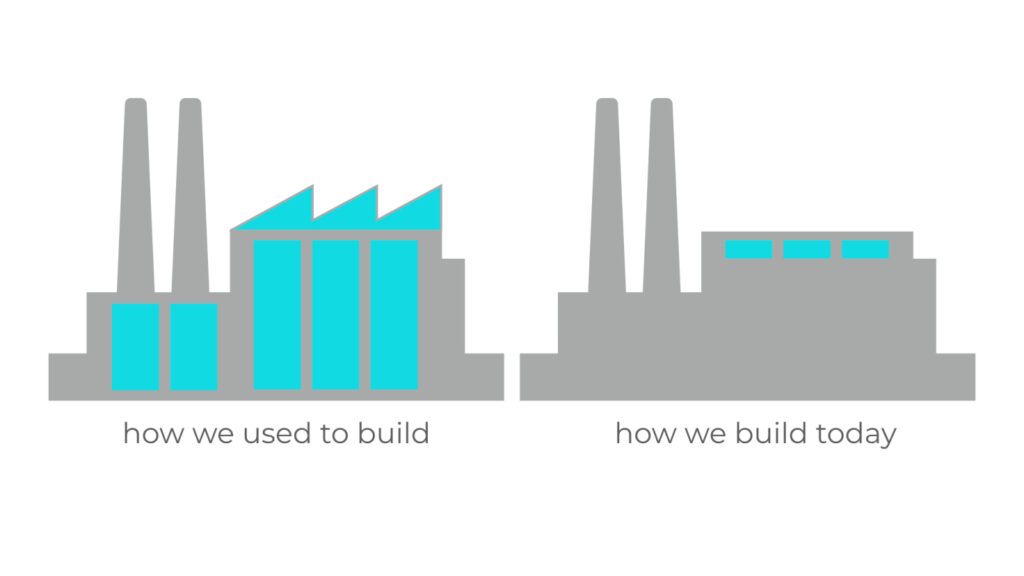
Factories followed the same trend, as did stores and warehouses and train stations and other big places. Factories used to have more glass than homes, acres of it. Huge windows now make city “loft” spaces highly desirable, but back then the building owners just wanted free light (and air) so the workers could keep the machines running. They even put glass all over the roof, created sawtooth shapes to scoop up north light, and used mirrors to reflect light to where it was needed.
Drive past a big warehouse or factory today and the view is starkly different.
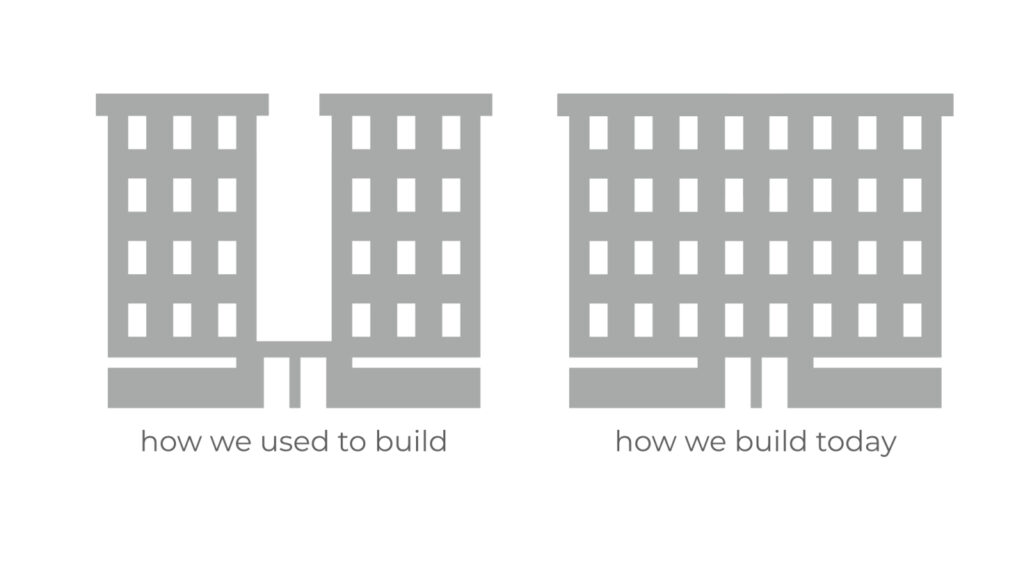
In cities, where we needed bigger buildings but still needed light, atriums with glass roofs and light wells- empty places in the middle of the building- were created. This gave interior spaces access to light and air, which was important before air conditioning came along. When energy trumped livability, when cost savings trumped humanity, we filled in those blank spaces, replaced the skylights with a roof that doesn’t leak, and raked in the profits.
Meanwhile, the people suffered.
We are at last moving backwards in the right direction. Architecture and homes- at least the forward-thinking models- are increasingly including daylight throughout. Sawtooth roofs, light monitors, large windows, and skylights are returning. This time we have better glass, better sealing technology, better energy saving technology, and even better shades to cut down on the glare and heat gain.
And we have better science, too. We have studies that point out the impacts of not getting enough light on our sleep, aging, healing, mental capacity, and a host of other functions.
I guess that means I can be forward-thinking back to the good old days. Bring it.
